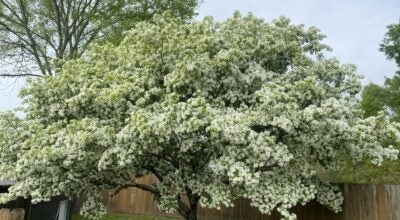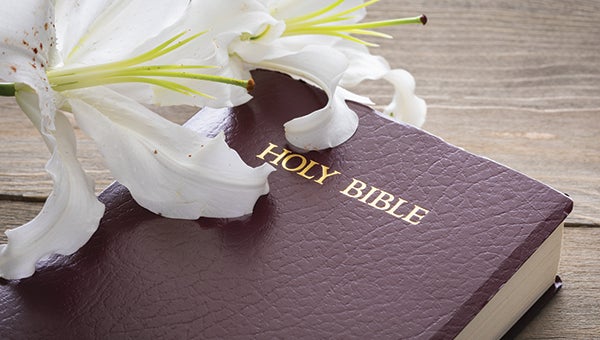Quilt blocks bring tourists to Washington Parish
Published 1:22 pm Wednesday, March 13, 2013
Back in the day, a quilt block was a square of fabric, comprised of different patterns, filled with batting and sewn by hand to be part of a larger square or rectangular quilt. Ladies would make their quilt blocks by hand in a communal setting. When enough blocks were made, they were sewn together to make a quilt. That process continues today, as many in Washington Parish still make quilts by hand, the old-fashioned way.
But since about two years ago, there’s another way to make a quilt block, even for those who can’t sew.
Following a trip to North Carolina, Ponchatoula resident Ann Boudreaux returned home and presented the idea for a Louisiana quilt trail to artist Kim Zabbia, the owner and director of The Art Station in Ponchatoula. She listened, and when she learned that the quilt blocks were painted on wood, she said, “OK, we can do this.”
Zabbia, who spoke at the Bogalusa Rotary Club’s weekly meeting this past week, began her program by praising Bogalusa, saying, “This is a great city, a wonderful city and it deserves a tourist draw.”
Tourism, she said, is what the quilt trails all over the country are all about. The idea for a quilt trail came about a decade ago and was the brainchild of a woman in Ohio who decided that the small town she lived in needed to find a way to draw people into the small community to bring in more revenue. With the help of two other ladies she painted a quilt block on her mother’s barn. It was a three-year project, but once they built it, tourists did come. And before long, there were more than 200 quilt blocks in their area of Ohio alone.
The idea spread, and that’s how Boudreaux brought it back to Louisiana.
“It’s really about tourists,” Zabbia said. “It’s lovely that it’s about quilting, because quilting is a very private art,” in that in order to see someone’s artwork, you have to go in his or her bedroom and look at the quilt on top.
“It takes that private art and brings it outside into the public so that more people can appreciate it.”
Continuing, Zabbia said that every dollar that comes in as a result of the quilt trail turns over at least seven times, although Lt. Gov. Jay Dardenne said in a recent speech that that number can be more than double, turning as much as 17 times.
The Louisiana Northshore Quilt Trail began in Tangipahoa Parish, but Zabbia said that the organizers decided to bring in the four surrounding parishes.
“We started in just the little five parish region — Tangipahoa in the middle, with St. Tammany on the right and Livingston on the left, and Washington and St. Helena parishes. We want (tourists) to come to our five parish area because we cherish what we already have here and want them to travel through our spots.”
Zabbia urged anyone who is interested to build a block.
“The more blocks you have up, the more tourists you bring, because people will drive like crazy to find your block,” she said.
Attaching a block to a business is a good way to have more foot traffic.
“They come in and introduce themselves,” Zabbia said.
Quilt blocks are going up in Washington Parish, she continued, with seven already installed in Franklinton. In Bogalusa, one has been installed at the Native American Museum in Cassidy Park, and another has been completed to be installed at the Pioneer Museum, also in Cassidy Park. Zabbia unveiled that block at the Rotary meeting.
“Louisiana is a little different,” she said. “We’re different, were special, were atypical and that’s what we are very proud of. Out quilts are not necessarily all traditional. They’re very personal.
“We now have 89 registered and 68 installed.”
After showing the appreciative audience slides of a number of quilt blocks throughout the Northshore Quilt Trail, Zabbia went through the steps involved in making a quilt block.
Each quilt block must be square, and there’s a standard design for the square and its backing. The estimated cost of a 4-foot by 4 foot square can run as high as $825, depending on how “handy” a person is.
Hiring a designer can run from $100 to $250. Materials run from $100 to $150. The painting of the block can take as much as 20 hours and cost from $250 to $300 to hire an artist. Installation, which should be on an exterior wall at eye level runs from $100 to $125.
The cost for registering the block is $50, a one-time charge for becoming a member of the LNQT Association.
For complete details on the process of making a quilt block and a detailed materials list, visit the website at louisianaquilttrail.com. One the site, there are photos of all the blocks on the trail, along with the stories behind them and the address to find them.
One a quilt block is registered the association does the rest.
“We do a massive amount of marketing,” said Zabbia. “We have an Interstate sign going up soon so that people can see attractions nearby and take off and head that way.”
What was once a pioneer craft has come full circle to become a way to increase revenue for small towns all across the country. The Louisiana Northshore Quilt Trail could prove to be a boon to all of Washington Parish.






